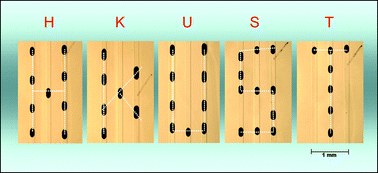Generation and manipulation of “smart” droplets
Abstract
We report the generation and manipulation of electrorheological (ER) droplets that exhibit the giant ER effect. The experiments were carried out on specially designed microfluidic chips, in which the ER droplets were generated by using the microfluidic flow-focusing approach. Both the size and formation rate of these droplets can be controlled through digitally applied electrical signals. The principle of droplet manipulation is based on the electrical responsiveness of ER droplets and hence the denotation of “smart” when the electrical signals can be triggered by sensing/control devices. Due to the unique characteristics of the GER effect, the smart droplets can deform and even stop the microfluidic channel flow under an applied electric field. The pressure difference induced by the smart droplets inside the micro-channel is controllable by varying the field strengths, droplet sizes and particle concentrations in the GER suspension. By trapping and timed release of smart droplets in different micro-branch channels, we demonstrate that the smart droplets generated upstream cannot only be stored or displayed in the desired downstream channel(s) and thereby offer the potential of micro-droplet display, but also be useful in counting, flow directing and sorting the desired number of passive droplets sandwiched between two smart droplets. Such capabilities of smart droplets will enable the programmable control of discrete processes in bio-analysis, chemical reactions, digital microfluidics, and digital droplet display.


 Please wait while we load your content...
Please wait while we load your content...